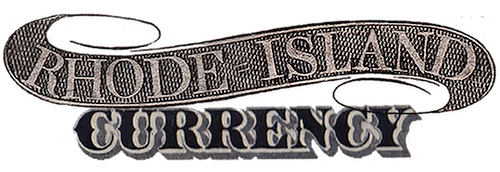Centreville Bank, Warwick
The Centreville Bank was granted a state charter in 1828, at a time when industry, powered by the Pawtuxet River, was spreading all across Kent County. The bank was located at the corner of Water and Main Streets in the Centreville section of West Warwick. Its founders were Sylvester Knight, a surgeon, and John Greene, one of the owners of the Warwick Manufacturing Company. Greene was named the bank’s first president and Moses Fifield, a teacher and former Methodist minister, was cashier.
Centreville became a national bank in 1865 and was given charter #1284. In 1888, the Centreville Savings Bank was founded and was thereafter closely associated with Centreville National (and at times referred to as “The Centreville National and Savings Bank” in records). The presence of this consumer-oriented institution reflects the population growth that accompanied the area’s evolution from a collection of small mill towns into an industrialized hub of textile manufacturing.
As a national bank, Centreville issued a total of $1,466,230 in $1, $2, $5, $10 and $20 large and small size notes. 26 of these are in collectors’ hands today, according to the National Bank Note Census.
On April 25, 1901, the bank moved to the Jericho section of West Warwick (now known as Arctic). The firm of Hutchins and French of Boston was commissioned in 1928 to design a new building for the institution. Writing in 1975, a local historian noted that this structure is, “faced with Indiana limestone, and the great bronze entrance is flanked by classic columns each hewn from a single stone. Across the frieze at the top in letters of bronze is the name of the bank. Floors are of imported travertine marble bordered with Belgian marble columns. The glistening steel doors guarding the bank are designed along the very same lines as those in the Federal Reserve Bank of Boston.” — Mathias P. Harpin. The High Road to Zion. Centreville, R.I.: Harpin’s American Heritage Foundation, 1976.
The bank is still in business today and retains the 1928-designed structure as its headquarters. It has dropped “national” from its name and is known simply as Centreville Bank. Its assets have grown from $25,000 in 1828 to $815 million in 2005.
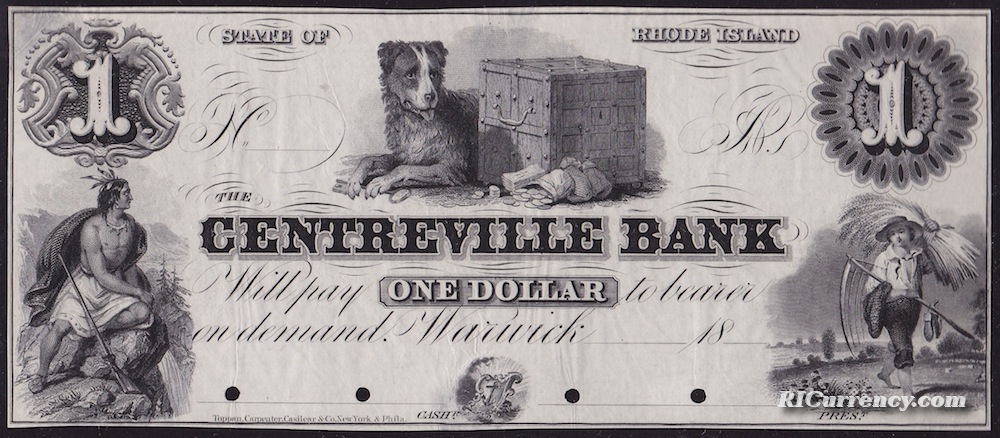


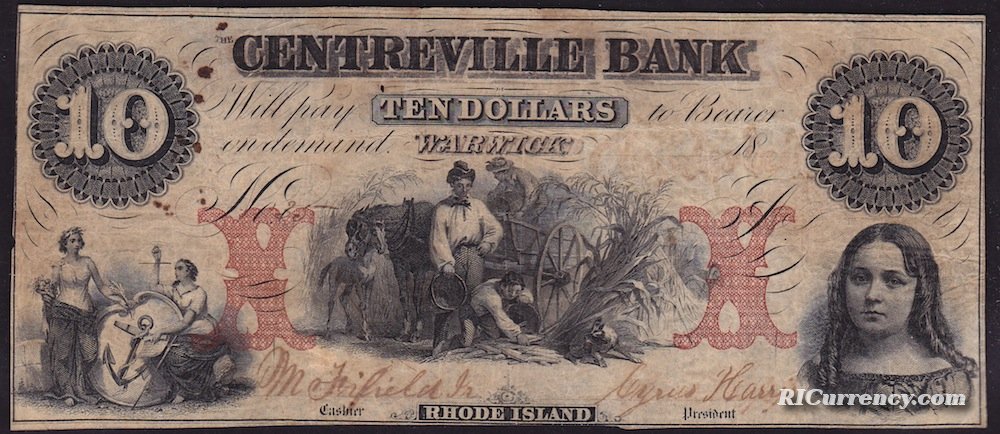
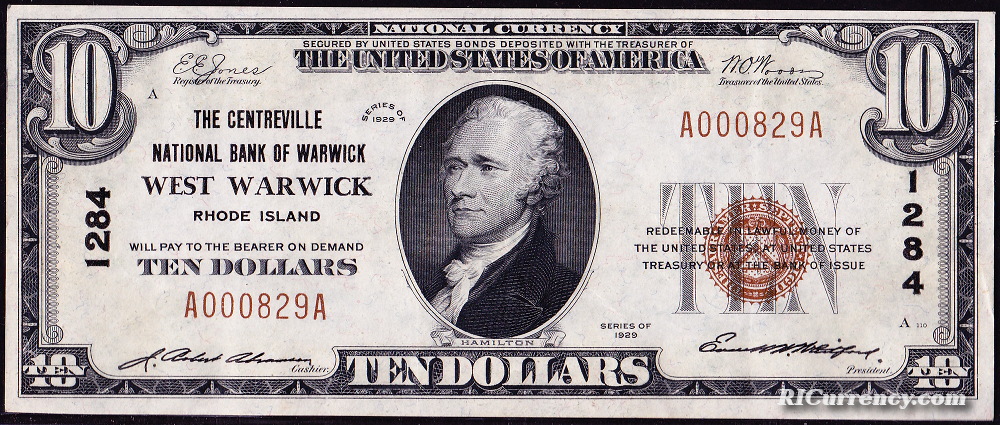
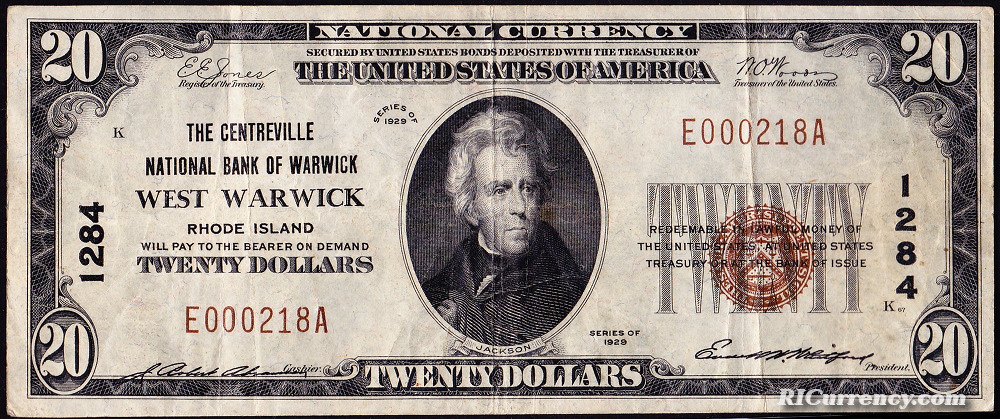
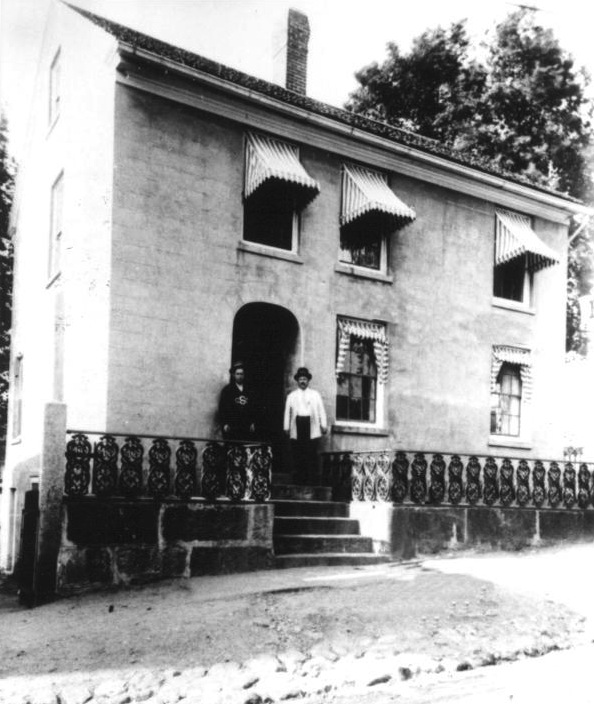
The original home of the Centreville Bank.
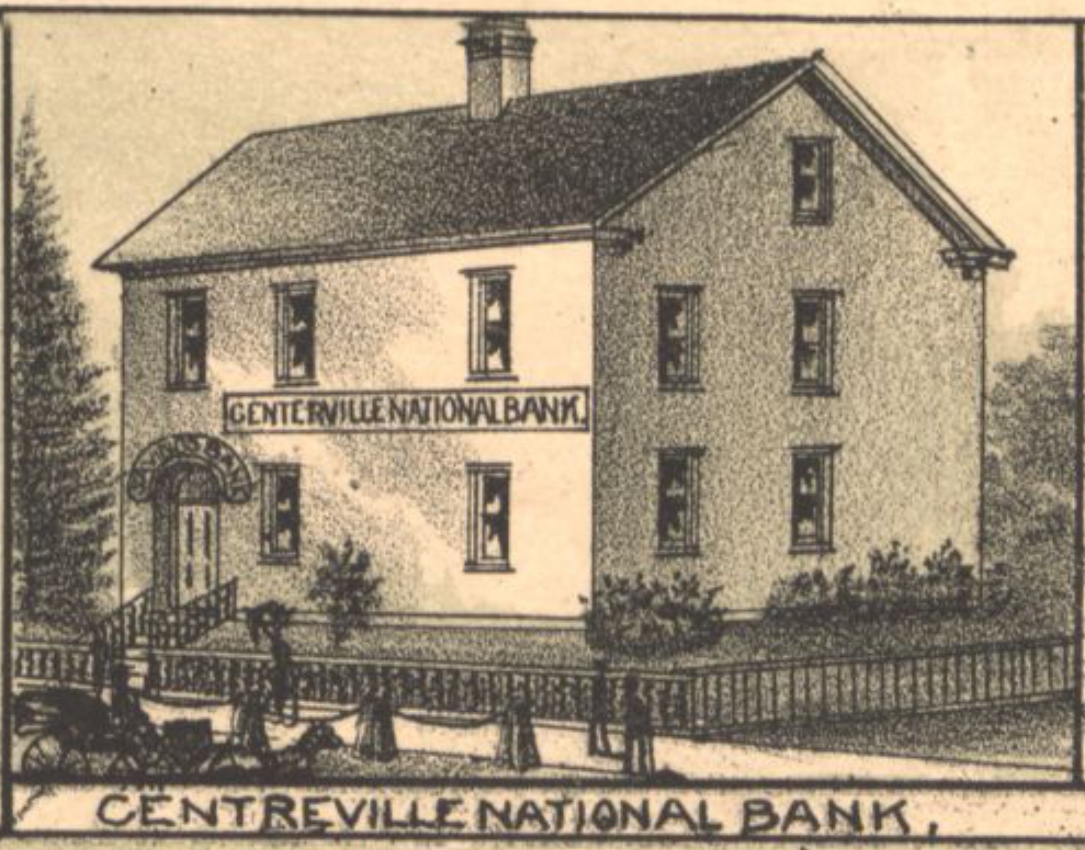
A detail of an 1889 map of Centreville shows the bank’s former home.
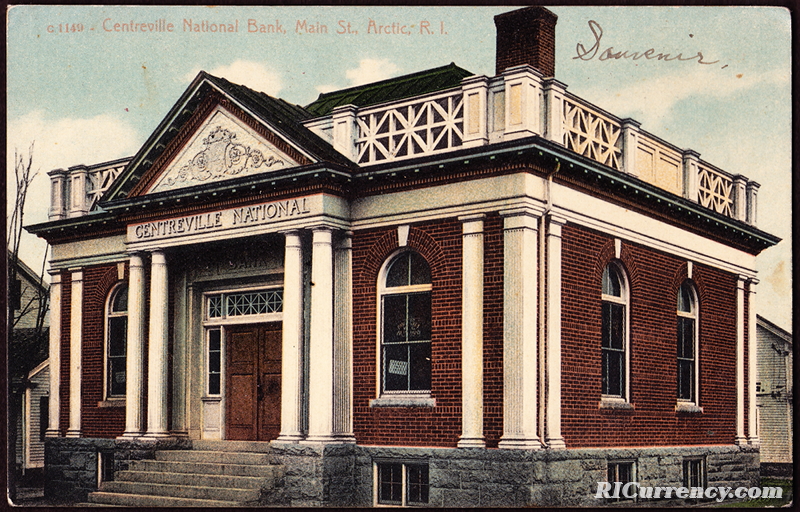
In 1901, the bank relocated to corner of Main and Bank Streets in Arctic. According to historian Raymond A. Wolf, when Main Street was widened in 1920, this building was torn down and replaced with the structure below.
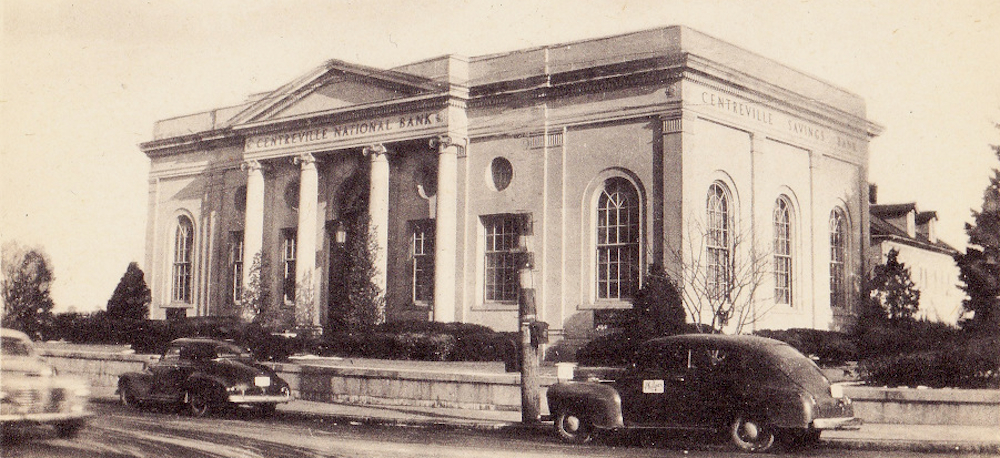
A 1940s postcard shows the bank’s headquarters at 1218 Main Street, West Warwick, which it occupies to this day.
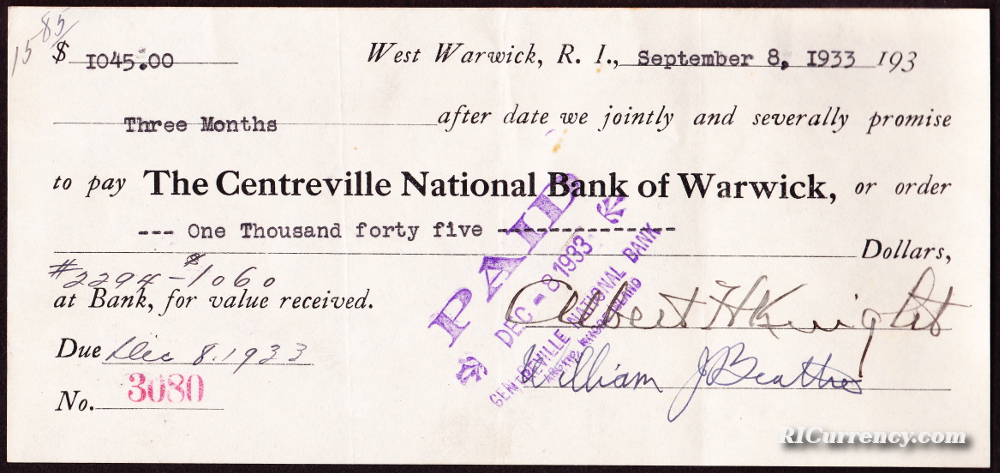
3-month promissory note, dated September 8, 1933, for $1,045. Signed by Albert H. Knight.
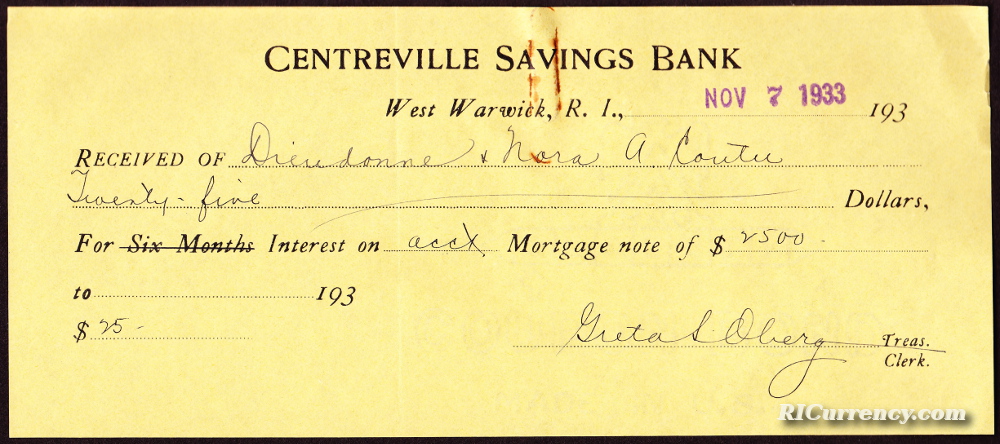
Centreville Savings Bank receipt, dated November 7, 1933. $25 in interest on a mortgage of $2,500. Taken out by Dreudonne and Nora A. Coutu.
